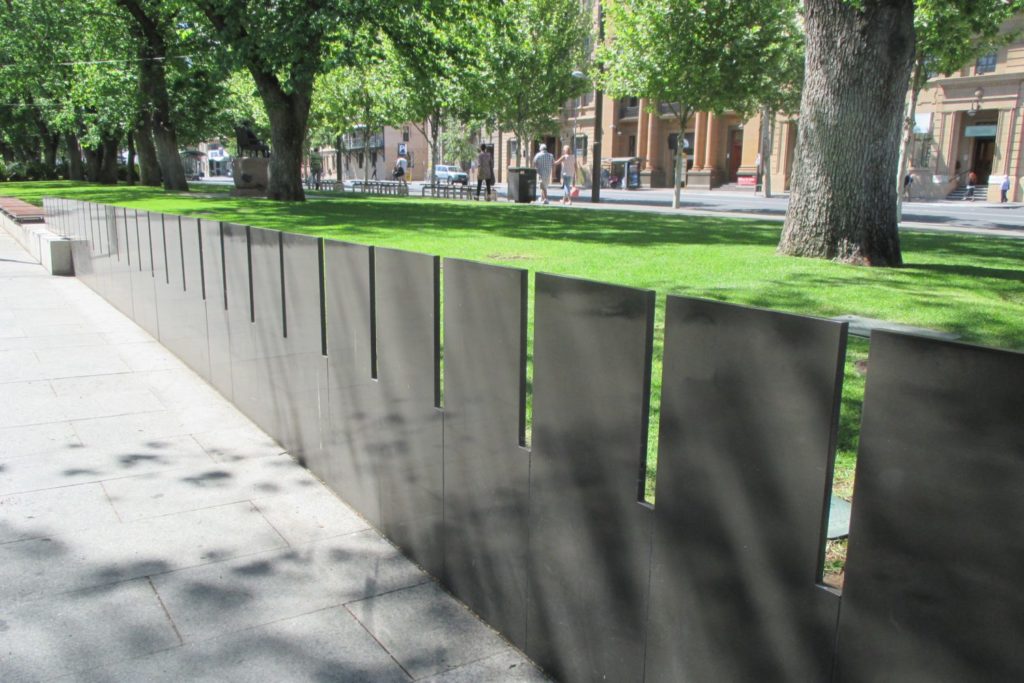I’ve seen Christchurch’s future – and it’s in Adelaide
Adelaide and Christchurch have much in common, and I don’t just mean earthquakes.
Prior to departing for Adelaide, friends asked why? In the minds of many, choosing Aussie’s fifth city as a holiday destination is akin to an extended church sermon. However, I had heard rumours that Adelaide was like Christchurch so with curiosity aroused, I shuffled through airport security personal who make nazis look friendly, and bought enough whiskey to enjoy even the most boring vicar.
Both Christchurch and Adelaide were settled at similar periods as part of Edward Gibbon Wakefield’s get rich scheme, having made nothing from his previous career as a kidnapper (the kidnappee was 15 and Edward thought she would make a marvellous wife, given her rich parents). Needless to say Eddy spent three years in jail, enough time to come up with the idea of promoting colonisation to an unsuspecting ‘new world’.
Subsequent to settlers suffering six months in a leaky boat, both Adelaide and Christchurch were duly laid out in grid patterns by surveyors who seemed to have left their french curves at home. An extensive framework of parkland featured in both cities’ visions, the difference being that Adelaide’s remains intact to this day, while Christchurch is trying to get back to the future via ‘The Frame’. Thanks to ‘ten pound poms’ arriving like flies on a kangaroo carcass, Adelaide simply grew faster than Christchurch and is now home to 1.3 million Australians with not a convict among them.
I must say that experiencing Adelaide in the flesh (although I did wear a hat), after ten days of walking, biking, driving, eating and drinking, I now have perfectly formed thoughts about the ‘city of churches’. By my observations, Adelaide consists of folk that are very white, very ‘prosperous’, and dress like its 1985. However, disparaging remarks aside, the punchline is this – Adelaide is where Christchurch is heading.
If you are sceptical about the Christchurch’s blueprint (Recovery Plan), take a close look at Adelaide – the frame of green space and civic amenity is there for all to see. We can take great comfort from knowing that the Christchurch blueprint has been tried and tested by the cousins. The ring of parks that surround Adelaide’s CBD are fantastic, and proof, just like sex and laughter (preferably at the same time), that you can you never have too much of a good thing. Furthermore, the Adelaide Oval sports complex lies within vomiting distance of the CBD and stands as a beacon to gladiatorial young men. The museums and art galleries are all handily located adjacent to each other so that I was able to seamlessly segway from Egyptian tombs to contemporary aboriginal art without having to exposure my pasty skin to the searing sun.
The lesson for Christchurch (one which is articulated in The Frame), is that you really must put your amenities together, in much the same way that KFC, McDonalds, and Burger King like to share the same footpath. Why make punters suffer the tyranny of distance – even if it is for cardiac arrest.
Adelaide has a lot of things right, particularly in the central city. Yes, you need a cut lunch to get to suburbs that stretch endlessly into the horizon, but in Australia they have this cheap and reliable thing called public transport. Trains and trams whisk you home, and although the conductors smell of union musk, they apparently earn enough to buy things.
Adelaide is I suspect, a great place to live. It’s certainly a great place to visit. Not only is it legible and interesting, the parks are beautifully maintained. Roadside roses bloom in celebration of mother England, and sprinklers keep the grass green and desert at arms length. Just to make your stay even more pleasant, the city provides free bicycles and free internet. Riding through the city’s ring of parks all the while connected, through the visor of my draconian bicycle helmet (yes they have that rule there too) I could clearly see Christchurch’s future, and it is good, really good.
Richard Alexander Bain
self confessed dingbat

